Can Tree Surgery Really Save a Tree on the Brink of Collapse?
Mature trees are a treasured part of any landscape—offering shade, character, and ecological value. But when a tree begins to show signs of significant decline, many property owners wonder whether it’s too late to save it. The good news is that in some cases, targeted tree surgery can rescue a tree that appears to be on the brink of collapse. At Long Eaton Tree Surgeons, we provide expert diagnostics and treatments to help homeowners and landowners across Long Eaton, Nottingham protect their trees before removal becomes the only option.
Understanding when a tree can be saved—and when it can’t—requires a close look at the causes of decline and the professional interventions available.
Common Signs a Tree Is in Trouble
Before we can explore how tree surgery may help, it’s important to recognise the symptoms of a tree in serious distress. You may notice:
- Sudden leaf loss or delayed bud break
- Cracking or splitting in the trunk
- Fungal growth around the base or on the bark
- Leaning or unstable root flare
- Dead or dying branches in the canopy
- Bark falling off in large patches
- Discoloured or oozing sap
While some of these symptoms can indicate irreversible damage, others may be reversible with prompt professional attention.
What Causes a Tree to Decline?
A tree can begin to fail for various reasons—some natural, others environmental or accidental:
- Root damage from nearby construction, trenching or poor drainage
- Fungal infections such as honey fungus or root rot
- Compacted soil restricting oxygen and nutrient uptake
- Storm or wind damage weakening branches or splitting stems
- Pest infestations, like wood-boring insects or aphids
- Incorrect pruning practices from the past, leading to decay or imbalance
At Long Eaton Tree Surgeons, we carry out comprehensive tree assessments throughout Long Eaton, Nottingham to identify the underlying cause before deciding on the appropriate solution.
How Tree Surgery Can Help
Tree surgery is not simply about cutting back limbs. It involves a variety of skilled techniques designed to restore balance, reduce stress, and improve the long-term stability of a tree. Depending on the severity and nature of the problem, the following interventions may help save a struggling tree.
1. Crown Reduction or Reshaping
Removing specific limbs in the upper canopy can:
- Reduce wind load on a weakened structure
- Prevent further splitting or breakage
- Improve light and airflow to aid regeneration
- Rebalance the tree if it has developed a lean
This must be done carefully to avoid removing too much live growth, which could further stress the tree.
2. Crown Thinning or Deadwood Removal
Removing dead or diseased branches encourages new growth and reduces the weight burden on the rest of the tree. Thinning the crown:
- Allows better light penetration
- Promotes healthy internal growth
- Improves airflow, reducing fungal risk
- Enhances the tree’s appearance and safety
This is especially useful where decline is caused by dense, shaded conditions or minor fungal infections.
3. Cabling and Bracing
Where a tree has developed weak forks, heavy limbs or structural instability, specialist supports can be installed to hold it together safely.
Benefits of cabling and bracing include:
- Reducing the risk of collapse during storms
- Supporting branches that may otherwise split away
- Extending the life of a historically or visually significant tree
This is a non-invasive technique and particularly useful for trees that cannot be reshaped through pruning alone.
4. Soil Conditioning and Root Zone Treatment
In cases where root health is poor due to compacted soil or lack of nutrients, we may recommend:
- Aerating the root zone to allow more oxygen and water flow
- Adding organic matter or specialist feeds
- Improving drainage to prevent waterlogging
Healthy roots are essential for the tree to recover from stress and regain structural integrity.
5. Pest and Disease Management
Where infections or infestations are present, early intervention can limit spread and encourage recovery. We may:
- Remove infected limbs to prevent further decay
- Apply appropriate biological or chemical treatments
- Monitor the tree over time to ensure stability improves
Not all pests or diseases are fatal, and many trees bounce back if treated quickly.
When Tree Surgery Is Not Enough
In some situations, the tree may be too far gone to recover safely. If the main trunk is hollow, the roots are heavily rotted, or there is a risk of falling on nearby buildings or people, felling may be the only responsible course of action.
At Long Eaton Tree Surgeons, we always prioritise preservation but will recommend removal if the tree poses a serious hazard to safety or property in Long Eaton, Nottingham.
Why Early Intervention Matters
Time is a key factor in whether tree surgery can save a tree. The earlier you act after noticing signs of decline, the better the outcome. Regular inspections and preventative care can extend a tree’s life significantly—even if it has begun to fail.
Conclusion
Yes—tree surgery can often save a tree that appears to be on the verge of collapse. However, success depends on timely intervention, expert assessment, and the right combination of pruning, support, and soil care. If you suspect your tree is in trouble, don’t wait.
Contact Long Eaton Tree Surgeons today. We provide professional tree inspections, honest advice, and high-quality care to restore the health and structure of vulnerable trees across Long Eaton, Nottingham. Let us help you protect your trees—and your property—for the long term.
Call us on: 0115 647 3811
Click here to find out more about Long Eaton Tree Surgeons
Click here to complete our contact form and see how we can help with your tree needs.

